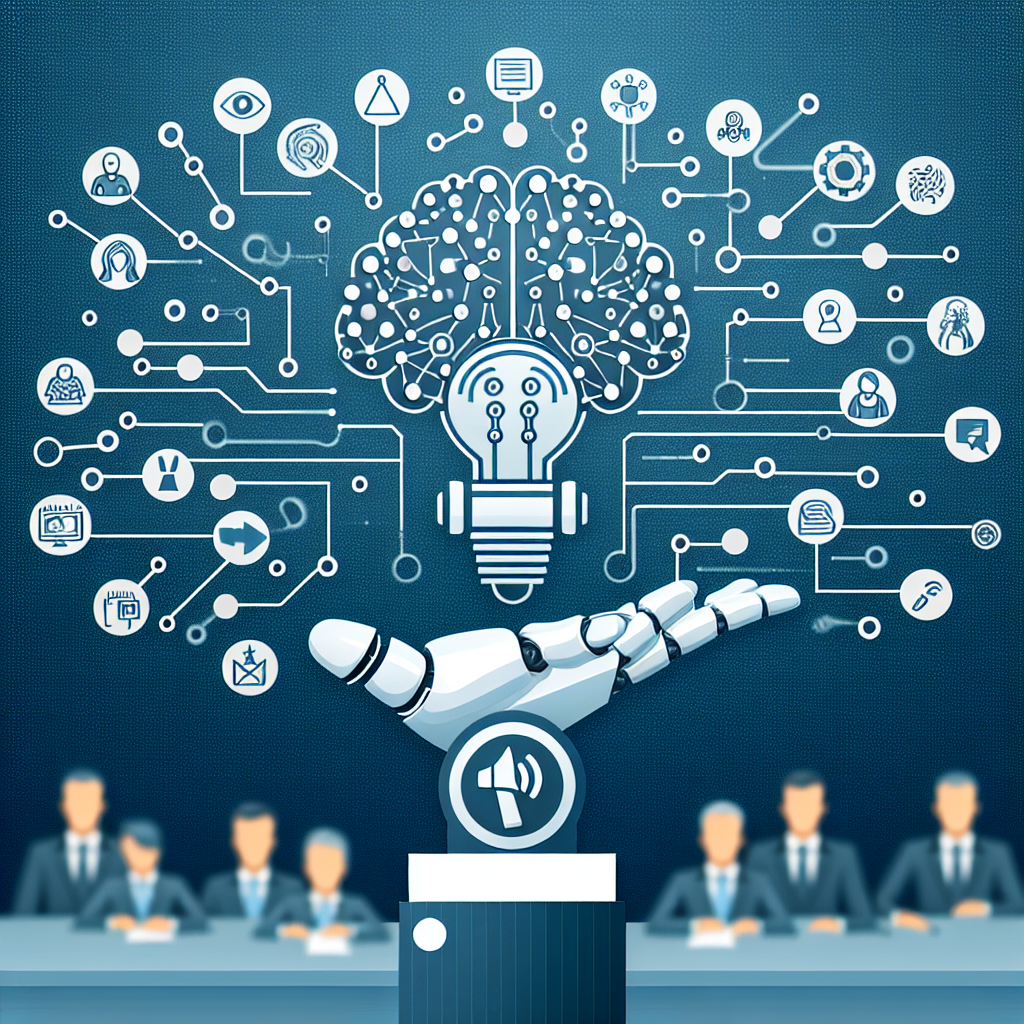In today’s digital age, government communication and public relations are undergoing a significant transformation with the integration of artificial intelligence (AI) technology. AI has the potential to revolutionize the way government agencies interact with the public, improve the efficiency of communication processes, and enhance the overall transparency and accessibility of government information.
AI technologies such as natural language processing, machine learning, and chatbots are being increasingly utilized by government agencies to automate routine tasks, provide personalized responses to inquiries, and streamline communication processes. These technologies enable government agencies to engage with citizens in a more efficient and effective manner, ensuring that information is delivered accurately and in a timely manner.
One of the key ways in which AI is transforming government communication is through the use of chatbots. Chatbots are AI-powered programs that can interact with users in a conversational manner, providing information, answering questions, and guiding users through various processes. Government agencies are increasingly deploying chatbots on their websites and social media platforms to provide instant assistance to citizens, streamline the process of accessing government services, and handle a large volume of inquiries efficiently.
For example, the U.S. Citizenship and Immigration Services (USCIS) has implemented a chatbot on its website to assist users with common questions related to immigration processes, forms, and eligibility requirements. The chatbot is able to provide accurate and up-to-date information to users, reducing the burden on USCIS customer service representatives and improving the overall user experience.
AI is also being used to analyze and interpret large volumes of data to identify trends, patterns, and insights that can inform government communication strategies. By leveraging AI-powered analytics tools, government agencies can gain valuable insights into public sentiment, monitor social media conversations, and track the effectiveness of their communication efforts in real-time. This enables government agencies to make data-driven decisions, tailor their messaging to specific audiences, and measure the impact of their communication initiatives more effectively.
Furthermore, AI-powered language translation tools are enabling government agencies to communicate with citizens in multiple languages, breaking down language barriers and ensuring that information is accessible to a diverse range of audiences. These tools can automatically translate text, audio, and video content into multiple languages, allowing government agencies to reach a broader audience and engage with non-English speaking communities more effectively.
In addition to improving the efficiency and effectiveness of government communication, AI is also enhancing the transparency and accountability of government agencies. By automating routine tasks and processes, AI technologies can help streamline communication workflows, reduce errors, and ensure that information is delivered consistently and accurately. This can help build trust and credibility with the public, as citizens have access to timely and reliable information from government agencies.
However, as AI technology continues to evolve and become more integrated into government communication processes, there are also challenges and concerns that need to be addressed. Some of the key considerations include data privacy and security, bias in AI algorithms, and the need for transparency and accountability in AI-powered decision-making processes.
In conclusion, AI is transforming government communication and public relations by enabling government agencies to engage with citizens more effectively, streamline communication processes, and enhance the overall transparency and accessibility of government information. By leveraging AI technologies such as chatbots, analytics tools, and language translation tools, government agencies can improve the efficiency of communication processes, provide personalized responses to inquiries, and gain valuable insights into public sentiment. While there are challenges and concerns associated with the use of AI in government communication, the potential benefits of AI technology in enhancing government communication and public relations are significant.
FAQs:
Q: How is AI being used in government communication?
A: AI is being used in government communication to automate routine tasks, provide personalized responses to inquiries, streamline communication processes, analyze data, and enhance transparency and accessibility of government information.
Q: What are some examples of AI technologies being used in government communication?
A: Some examples of AI technologies being used in government communication include chatbots, analytics tools, language translation tools, and natural language processing algorithms.
Q: What are the benefits of using AI in government communication?
A: The benefits of using AI in government communication include improved efficiency, personalized responses to inquiries, data-driven decision-making, enhanced transparency, and accessibility of government information.
Q: What are some challenges and concerns associated with the use of AI in government communication?
A: Some challenges and concerns associated with the use of AI in government communication include data privacy and security, bias in AI algorithms, and the need for transparency and accountability in AI-powered decision-making processes.

